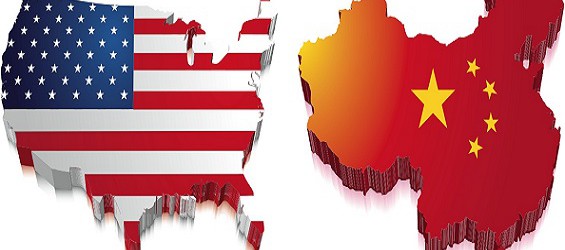World media is reporting about certain changes happening in the U.S. policy on Asia-Pacific region. Experts also agree that U.S. position on this front is slightly different. New developments are evidently taking place in the global geopolitics. Forecasts are not excluding this region to serve as a flashpoint for military hostilities. Meanwhile, U.S. is boosting its military presence there, with constant territorial claims of regional countries on the backdrop. Opinions regarding the outcome of these processes differ.
Washington’s ambitions: search for a new balance
Speculations are that the U.S. policy towards China has become preconditioned. Appearance of seemingly keen interest for cooperation turned out to be deceiving. Processes of recent days confirmed this assumption. On 5 February, the U.S. Congress deliberated upon the country’s policy in Asia, and decided to switch from balanced to more resolute position on the territorial disputes in the Asia-Pacific. The exercise of force was also taken into account. Analysts describe it as Washington’s inclination to dictate imperial ambitions (see: Vladimir Odintsov. The USA’s Asia policy is Shifting / “New Eastern Outlook”, 12 February 2014).
This a fascinating development in view of increasing U.S. criticism of the official Beijing on the issue of islands in the East China Sea. America apparently is starting to pursue a more systematic policy towards this region that sees growingly frequent encounters of pressure and use of military force. China’s announcement of the air defense identification zone that included the controversial islands mentioned above was apparently a deliberate move.
Washington used this development as a pretext for taking it to the next level of pressure application and threat making. The argument of the observers is underpinned by the U.S. trade turnover in the South China Sea that stands at $1.2 trillion (see: previous source) – a truly impressive figure. Nonetheless, the substance of the problem defies trade. Essentially, it is the content and objectives identified within the geopolitics pursued by the U.S. This is the very perspective that produced several aspects that deserve to be taken into account.
In this context, the hearing titled “China’s Maritime and Other Geographical Threats”, chaired by the Republican Dana Rohrabacher was held in the U.S. Congress on 30 October 2013. Notably the main theme of the event was the aggravating military standoff with China in the Asia-Pacific. The recommendation was to solidify Washington’s position in the region by increasing its military presence there.
According to the experts, it was not incidental that leaders of China and Japan made mutual accusations on the sidelines of the recent Davos meeting. Daniel Russel, the U.S. Assistant Secretary of State for East Asian and Pacific Affairs, was more explicit during the 5 February hearing in Congress and elaborated on the need to confront Beijing’s efforts in the South China Sea by saying, “…we must demonstrate a firm position regarding any maritime threats…” (see: previous source).
Some time ago the U.S. politicians described their position with respect to differences in the South China Sea as neutral. Therefore, present developments imply substantial changes in the U.S foreign policy on this region. Initial features of this policy line are already surfacing.
Official Washington “assisted” the Philippines in taking China to the International Tribunal for the Law of the Sea (ITLOS). Moreover, in an interview with “The New York Times” the President of the Philippines B. Aquino compared China wish the Nazi Germany. Some analysts even attribute it to the readiness of the U.S. to unleash a war (see: previous source).
Probability of a regional war
America is boosting the number of its military bases in the Asia-Pacific and is busy overhauling them with the latest weaponry. Apparently, we are not talking about some local and unsystematic steps. Washington aims to change the balance of power on the strategic level in the Asia-Pacific and revisits the U.S. position on China. This idea also prevails in one of Joseph Nye’s recent articles. His assumption is that America never abandoned its leadership aspiration and isolationism is out of question (see: Joseph S. Nye. The Myth of Isolationist America / “Project Syndicate”, 10 February, 2014). On the surface, the U.S. seems to be disengaged on Syria and Afghanistan issues. Recent opinion poll revealed that fifty-two percent of Americans thought their country was “less important and powerful” (see: previous source). In reality, however, the situation is slightly different.
The point is that largely, the American economy has rebounded and entered the growth phase. On the other hand, even with the biggest economy, China will never be as powerful as the U.S. According to Nye, America will remain the most powerful country in the world for the next decade. It’s not the start of “post-America” phase but rather the end of “XX century America era”. It implies that the U.S. will continue to be “one” but not the “only”. This is the spirit, in which it will sustain its world leadership (see: previous source).
Therefore, deriving from Washington’s position, development of other nations to match the one of China’s, becomes an imperative. Standoff between the two countries can really be bitter. Should Beijing amplify its aspiration to become a sole dominant power in the Asia-Pacific, it will inevitably encounter America’s resistance, something stemming from the general U.S. position. In his 2014 State of the Union address Barack Obama underscored that, “In a world of complex threats, our security depends on all elements of our power – including strong and principled diplomacy” (see: previous source).
In fact, the American President outlined the strategic objective that stood before his nation. Washington prefers the model of leadership that guarantees its security. Thus, according to Nye, along with remaining a world leader (in terms of prowess), the U.S. will strive to nurture regional leaders, provided they pursue a policy agenda consistent with the U.S. interests. This point must underlie growingly pessimistic forecasts regarding the economies of Brazil, Russia, Turkey and India as in certain principal moments in time the actions of these countries did conflict with the U.S. strategy.
More thought-provoking aspect has to do with forecasts about the geopolitical weight of the world shifting towards Asia. America’s toughening policy on China may impact those predictions. South-Caucasus experience may reveal some disguised elements. Rhetoric of “territorial claims of some regional powers” in the Asia-Pacific basin reminds Armenia that, after certain informational preparations, had unleashed separatism. Today Vietnam, the Philippines, South Korea and Japan all share territorial claims with China.
What would be the outcome of one of these nations starting a war against China? Washington is already accusing China. This implies the possibility of a protracted war in the Asia-Pacific breaking out. How substantiated would be the dismissal of such a probability?
Kaynak: Newtimes.az
























































